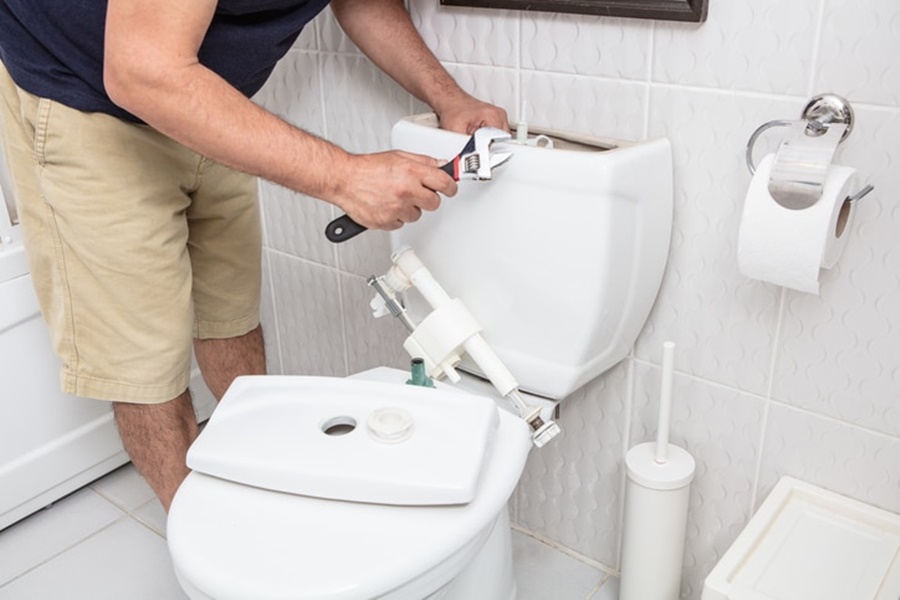A running toilet may seem like a minor household annoyance, but it can silently waste hundreds of gallons of water every day. Beyond the sound of trickling water lies a significant impact on both your monthly utility bill and the environment. A toilet that continuously runs due to a faulty flapper, fill valve, or float mechanism can be one of the biggest sources of unnoticed water waste in a home or commercial building.
Average Water Wasted by a Running Toilet
Depending on the severity of the leak, a running toilet can use anywhere from 200 gallons to over 4,000 gallons of water per day. The Environmental Protection Agency (EPA) estimates that a slow leak can waste about 200 gallons per day, while a more severe case, such as an unchecked or rapidly running toilet, can exceed 6,000 gallons in just 24 hours.
To put this in perspective:
A standard toilet uses approximately 1.6 gallons per flush.
A continuously running toilet can simulate hundreds or thousands of flushes per day.
Over a month, that could mean 60,000 to 180,000 gallons wasted.
This level of waste translates into dramatic increases in your water bill, often adding $70 to $150 or more monthly depending on local water rates.
Key Causes of a Running Toilet
Understanding what causes a toilet to run continuously is essential in preventing waste and saving money. Common causes include:
1. Faulty Flapper Valve
The flapper is a rubber seal that controls water flow from the tank to the bowl. If it becomes warped, cracked, or misaligned, water leaks into the bowl nonstop.
2. Defective Fill Valve
This valve regulates the water refill process after a flush. A broken or poorly adjusted fill valve can cause the tank to overfill and send excess water into the overflow tube, leading to constant refilling.
3. Improper Float Height
If the float, which dictates the water level in the tank, is set too high, it triggers unnecessary refilling by activating the overflow system.
4. Worn Out Gasket or Seal
Leaks can also stem from worn tank-to-bowl gaskets or bolts that allow water to seep through unnoticed.
Detecting a Running Toilet
Even if you can’t hear it, your toilet could be leaking. Here are simple detection methods:
1. Dye Test
Drop a few drops of food coloring or a dye tablet into the tank.
Wait 15–30 minutes without flushing.
If the color appears in the bowl, you have a leak.
2. Check the Water Meter
Turn off all water-using appliances.
Observe your water meter for a 1–2 hour period.
Movement indicates a leak somewhere in the system—potentially your toilet.
Calculating the Cost of a Running Toilet
Let’s assume a moderate leak that wastes 3,000 gallons of water per day. Here's how that plays out:
Daily Water Waste: 3,000 gallons
Monthly Waste: 90,000 gallons
Average U.S. Water Rate: $0.005 per gallon
Monthly Cost: $450 (or more)
This could be hundreds or thousands of dollars annually—money literally flushed down the drain.
Environmental Impact of Water Waste
Besides the financial cost, a running toilet significantly harms the environment. Clean, treated water is a precious resource. Here's why:
Energy Waste: Treating and pumping water consumes electricity. Every wasted gallon increases carbon emissions from power plants.
Water Scarcity: In drought-prone areas, such as California, water conservation is critical. A running toilet undermines community efforts to conserve.
Aquifer Depletion: Excessive water use lowers groundwater levels, threatening long-term supply sustainability.
Solutions and Prevention
Fixing a running toilet is usually straightforward and inexpensive. Here’s how you can address it:
1. Replace the Flapper
Most flappers cost under $10 and can be installed in under 15 minutes with no plumbing experience.
2. Adjust or Replace the Fill Valve
Modern fill valve kits are affordable and include detailed instructions. Adjusting the float to the correct level often stops the overflow.
3. Install Leak Detection Devices
Smart water sensors placed near the toilet base or in the tank can alert you to leaks via smartphone apps.
4. Schedule Regular Maintenance
Homeowners should inspect toilets annually, especially in older homes or properties with hard water that can wear down rubber parts faster.
When to Call a Professional
If you've tried replacing the flapper and adjusting the float, but the toilet continues to run, it may be time to call in a licensed plumber. Hidden issues like:
Cracked overflow tubes
Internal tank cracks
Corroded flush valves
Require expertise and tools that a homeowner may not possess. Spending $100–$200 on a professional repair could save you thousands in the long run.
Tips to Reduce Water Usage Overall
Preventing water waste starts with awareness. Alongside repairing running toilets, here are other water-saving tips:
Install dual-flush or low-flow toilets.
Don’t use toilets as trash cans—avoid flushing tissues or waste that could clog parts.
Educate family members or employees on proper toilet use and maintenance.
Use EPA Water Sense-labeled bathroom fixtures.
Conclusion
A running toilet is more than a mild inconvenience it’s a silent drain on your wallet and the planet. By identifying leaks early, making quick repairs, and maintaining your plumbing system, you can protect your finances and the environment. Don’t let water and money go to waste.

